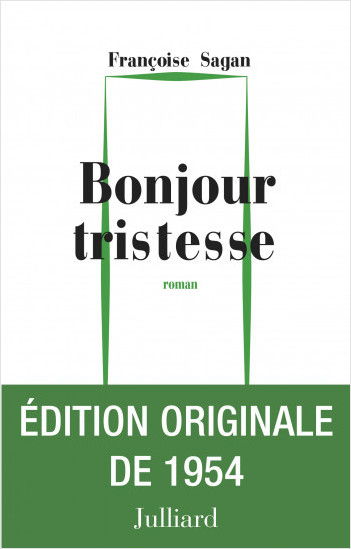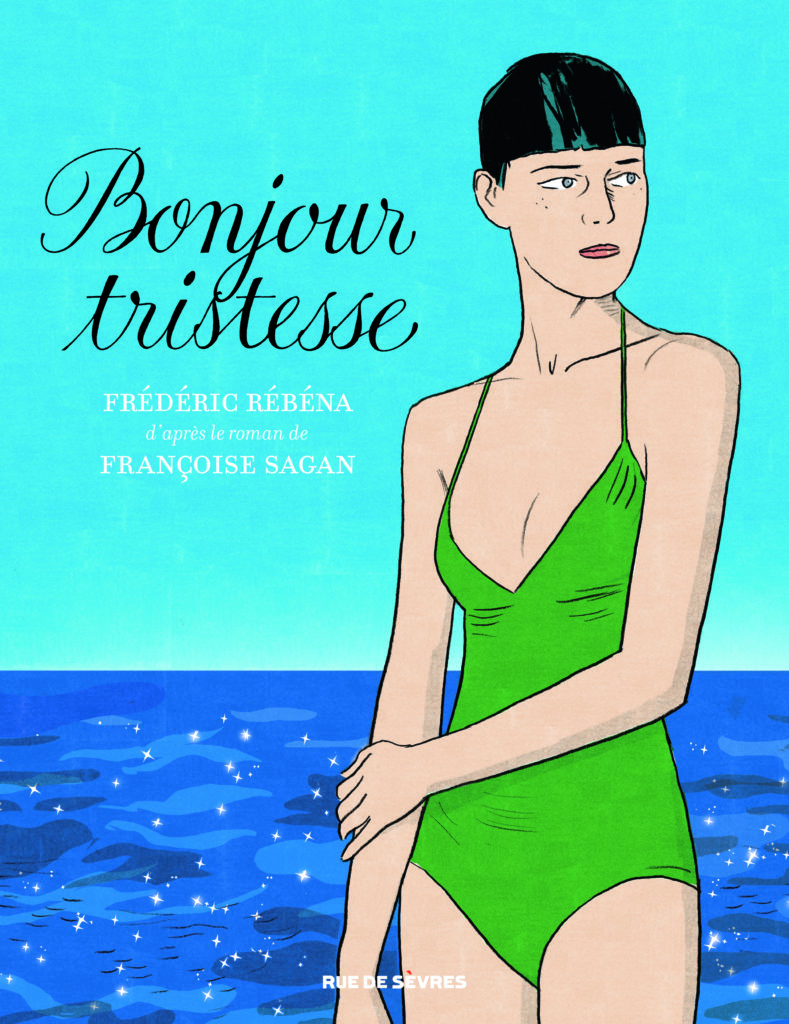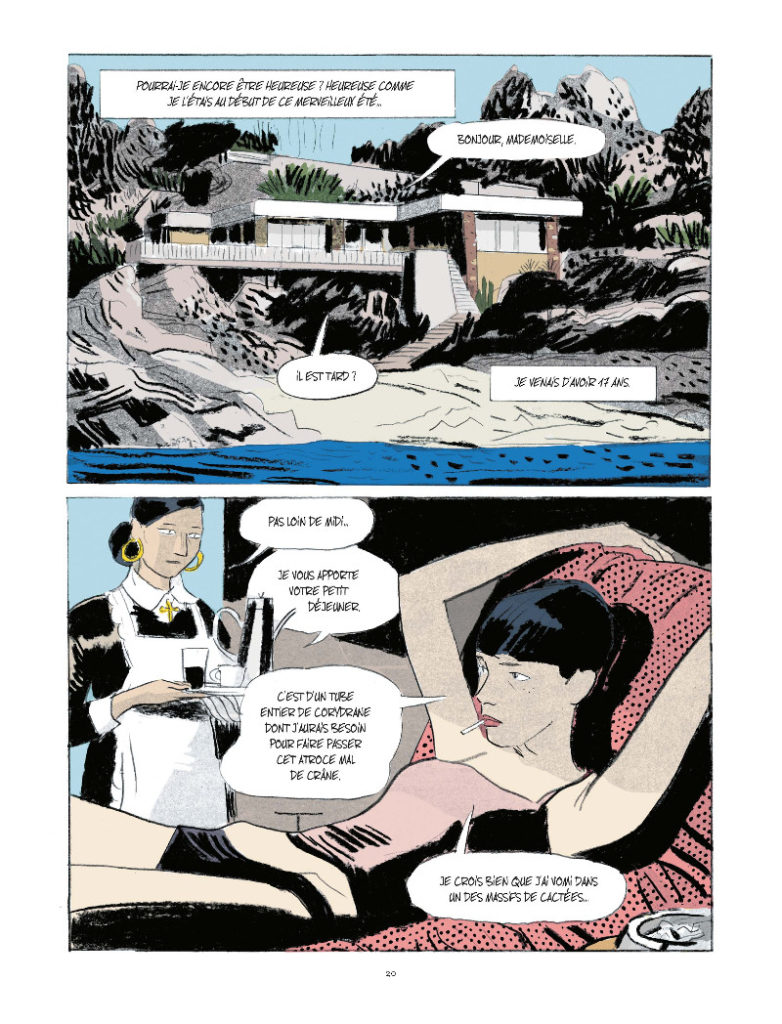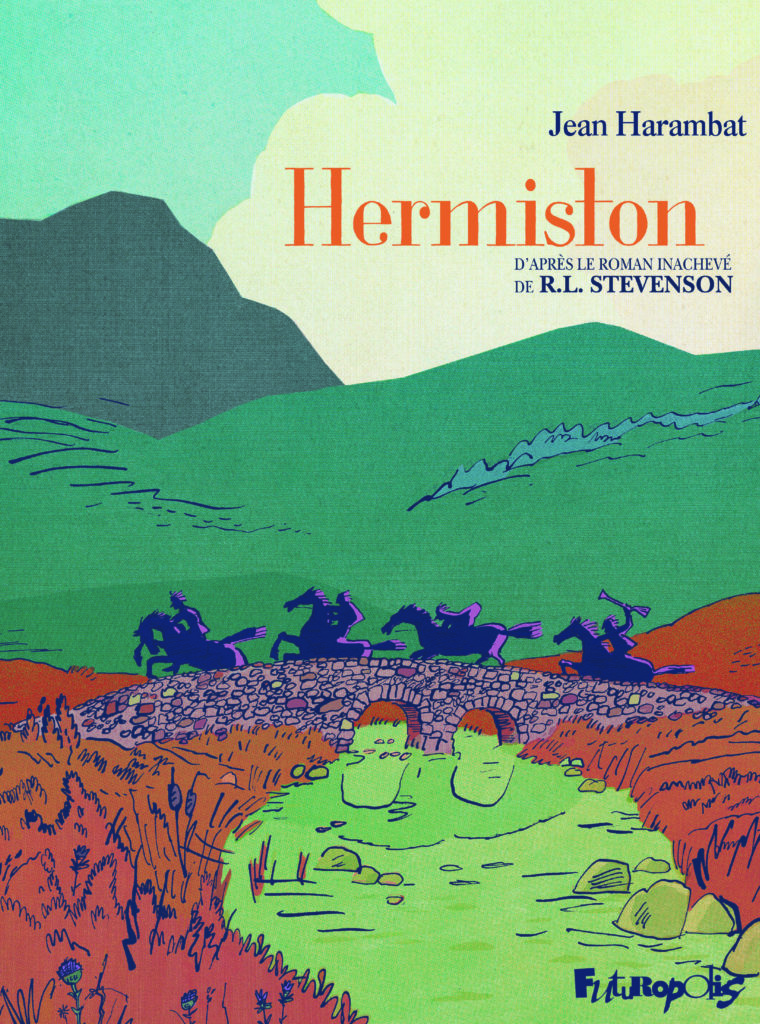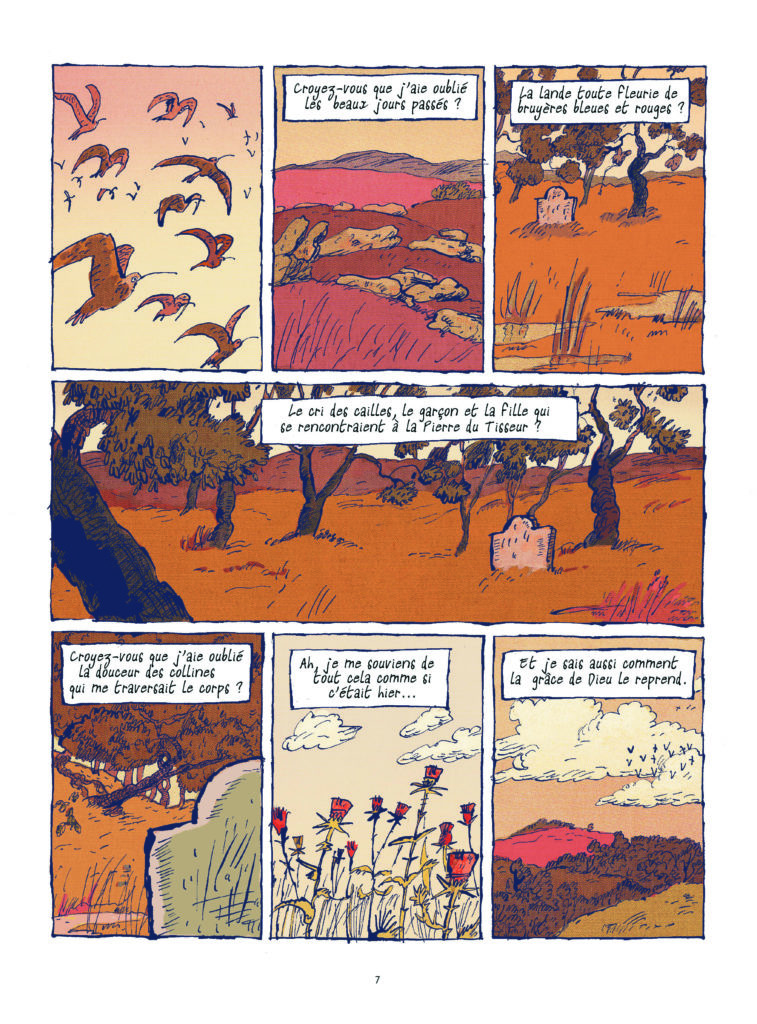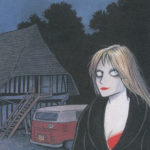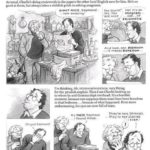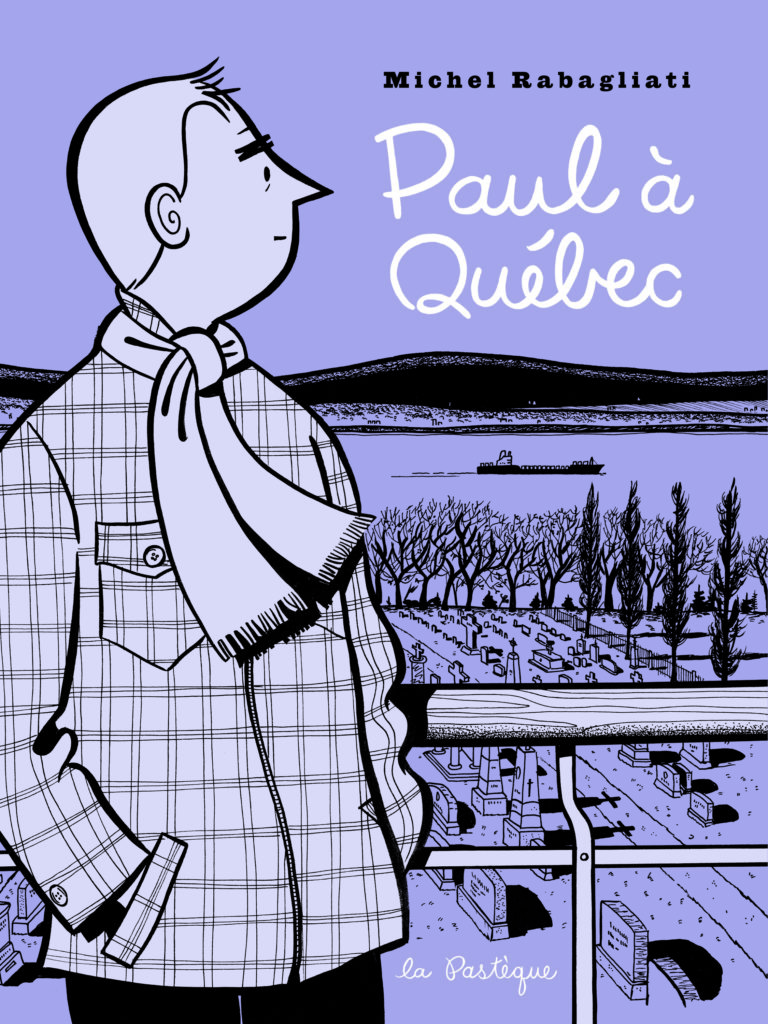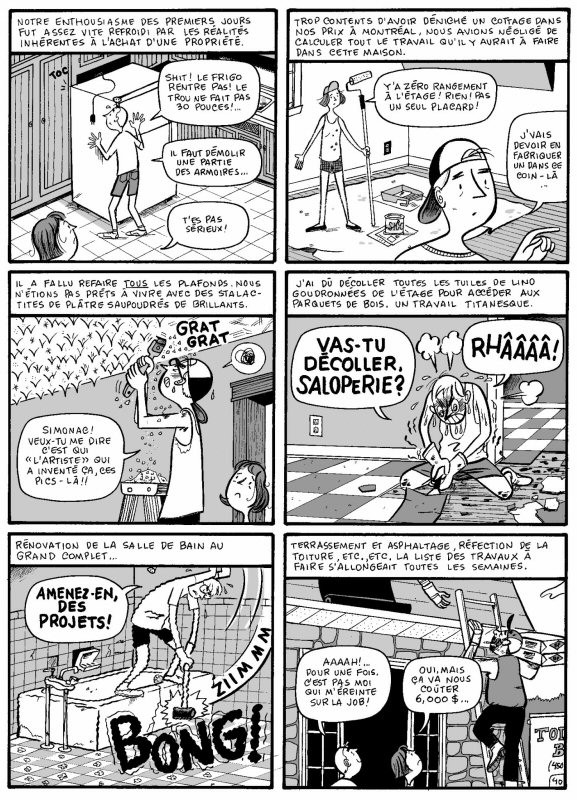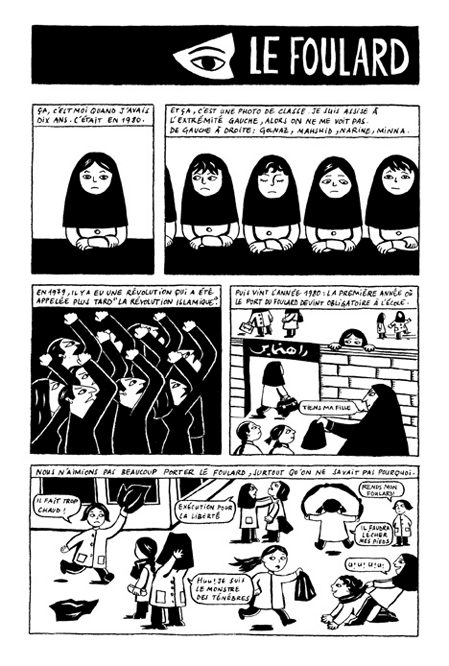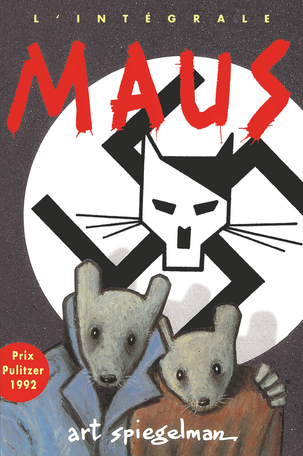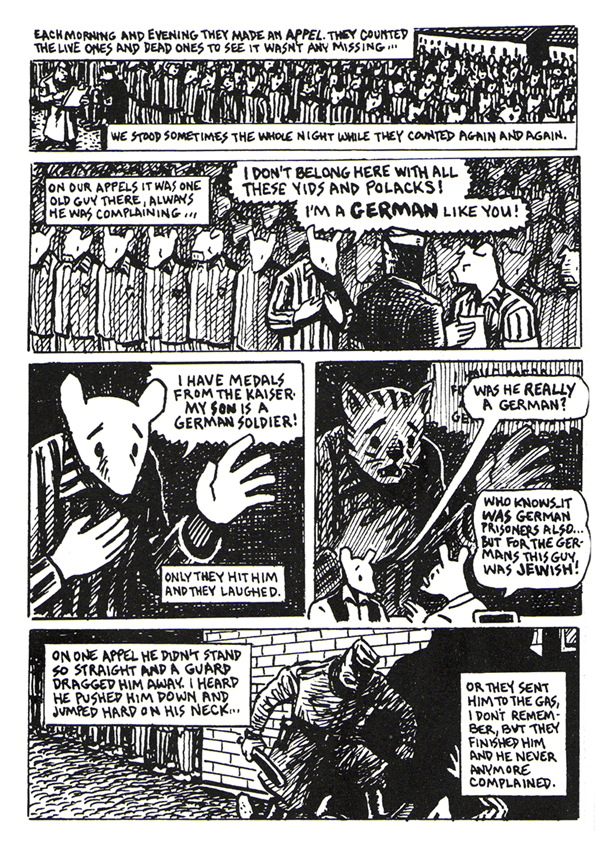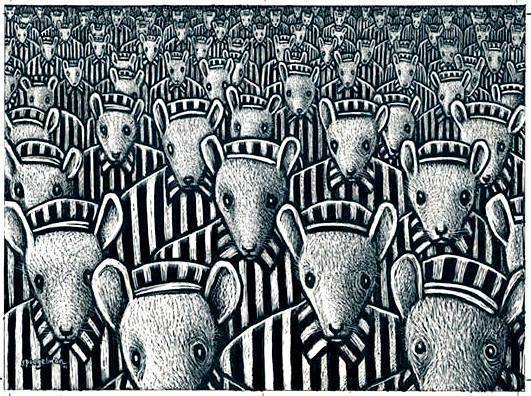Comics & Litterature
Litterature, traditionally considered to be the fifth art, is concerned with the written word, usually (but not always) presented in the familiar form of a book. This medium includes poetry, novels, and in general anything that is encountered by its audience in a written form.
Adaptation
Publishers have often used the fresh format of the comic book to breath new life into older classics from their back catalogs. While not every adaptation to comics is necessarily a great success, often times this change of medium can shed new light on a work of literature.
(1954, éditions Julliard)
Bonjour Tristesse, a novel by Françoise Sagan (1954, Julliard), tells the story of a uyoung girl’s summer on the Côte d’Azur, in the company of her philandering father and his various mistresses. Frédéric Rebéna’s comics adaptation of the novel takes several liberties with the source material, notably changing its chronology and beginning at the end of the story, focusing on the tensions that have arisen over the course of the tale.
The cartoonist Jean Harambat tackled Hermiston, adapted from a never-completed novel by Robert Louis Stevenson. Harambat brought the unfinished work to new life and fabricated an end to the story.
Jean Harambat
“When starting an adaptation, one thinks above all of not diminishing the original text, and to use the resources of the comic arts. One doesn’t want to fall into a sort of sub-litterature. Adaptation is a balancing act between fidelity, comprehension, appropriation, creativity, and art of comics itself.”
(2014, éditions Denoël)
Another interesting example of adaptation is Gemma Bovery by Posy Simmonds (2014, Denoël), which was inspired by Gustave Flaubert’s classic Emma Bovary, and which in turn was adapted into a film. An unusual path, but certainly not unique.
Novels aren’t the only form of literature to be brought to new life in the pages of comics. Poems have long been a source of inspiration for cartoonists as well. Recently, Montreal artist Julian Peters has created comics that draw on classic english, french, and italian poetry. A collection of his work, Poems to See by : A Comic Artist Interprets Great Poetry will soon be published by Plough Publishing.
These examples make it clear that the barriers between these sister arts of comics and literature are becoming more fluid and less compartmentalized. Another area of creative mixing can be seen in the world of children’s books, which clearly borrow much from comics in both content and form. The author Nicole Claveloux’s work references to Tintin, Donald and Bécassine, while Claude Ponti draws inspiration from works such as Little Nemo, Picsou or Lucky Luke.
(2009, La Pastèque)
On the other end of the spectrum, in recent decades the comic book has also embraced genres that were once considered the domain of “proper” literature, such as memoir, biography, and creative non-fiction. This has led to the creation of some of the most iconic and widely-read works in the medium, such as Paul by Michel Rabagliati (2009-2019, La Pastèque), Maus by Art Spiegelman (1987, Flammarion) and Persepolis by Marjane Satrapi (2000-2003, L’Association).
The Graphic Novel
(2000, L’Association)
What is a graphic novel? The term originates with Will Eisner, the author of A Contract with God, a work that is now considered a classic of the form, but was originally rejected by multiple publishers. For some, the graphic novel is a completely different category from traditional comic books. For others, it is an evolution of the form, adapting to a new and changing readership. The graphic novel can therefore be considered both as a bridge between literature and comics, and as another way to escape the stereotypes which are still too often imposed on the “ninth art.” Indeed, the word comic book often evokes two things, Franco-Belgian BD on the one hand, and American superheroes on the other.
The graphic novel can therefore be considered both as a bridge between literature and comics, and as another way to escape the stereotypes which are still too often imposed on the “ninth art.” Indeed, the word comic book often evokes two things, Franco-Belgian BD on the one hand, and American superheroes on the other.
Want to know more?
- Les apprentissages de Colette, Annie Goetzinger (2017, Dargaud)
- La chambre de Lautréamont, Édith & Corcal (2012, Futuropolis)
- Les derniers jours de Stefan Zweig, Guillaume Sorel based on Laurent Seksik (2012, Casterman)

